
Discreet Music is the fourth studio album by Brian Eno, and the first released under his full name. The album is a minimalist work, with the titular A-side consisting of one 30-minute piece featuring synthesizer and tape delay. The B-side features three variations on Canon in D Major by Johann Pachelbel, performed by the Cockpit Ensemble and conducted by Gavin Bryars.
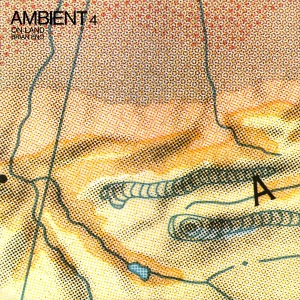
Ambient 4: On Land is the eighth solo studio album by Brian Eno, released in March 1982 by EG Records. It was the final edition in Eno's ambient series, which began in 1978 with the release of Ambient 1: Music for Airports. The album was released to critical acclaim, and is, along with the rest of the ambient series, recognised as a landmark album in the history of the ambient music genre.

Thursday Afternoon is the tenth solo studio album by Brian Eno, released in October 1985 on EG Records. Consisting of one 60-minute eponymous composition, it is the rearranged soundtrack to an 80-minute video production of the same title made in 1984.

Another Day on Earth is the twenty-second solo studio album by Brian Eno, released on 13 June 2005 in the UK and Europe through Hannibal Records, and on 14 June 2005 in the US. The album predominantly recorded and mixed on Macintosh software, using Logic Pro, over a period of four years.

My Life in the Bush of Ghosts is the first collaborative studio album by Brian Eno and David Byrne, released in February 1981. It was Byrne's first album without his band Talking Heads. The album integrates sampled vocals and found sounds, African and Middle Eastern rhythms, and electronic music techniques. It was recorded before Eno and Byrne's work on Talking Heads' 1980 album Remain in Light, but problems clearing samples delayed its release by several months.

The Shutov Assembly is the twelfth solo studio album by Brian Eno, released on 10 November 1992 on Opal via Warner Bros. Records. One of Eno's ambient albums, it was reissued in 2014 with a second disc with bonus tracks. It is considered the follow-up to Nerve Net, which was released that same year.

The production and album discography of Brian Eno primarily consists of 29 solo studio albums, 22 collaborative studio albums, 18 compilation albums, one remix album, four video albums, nine extended plays, and 27 singles, as well as numerous productions credits from numerous artists & bands' singles, albums and compilations.

Kite Stories is the eighteenth solo studio album from Brian Eno, released in 1999 by Opal Music.
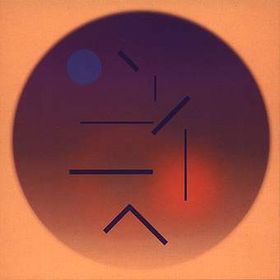
I Dormienti is the seventeenth solo studio album Brian Eno, released in 1999. It is also the title of an art-book by Eno and Italian painter, sculptor and set designer Mimmo Paladino, released in 2000, packaged with a copy of the album and featuring pictures & sketches of the installation from which the music is drawn. The music on the album is taken from an installation that took place at the undercroft of the Roundhouse, Chalk Farm Road, Camden, London, from 9 September to 6 October 1999.
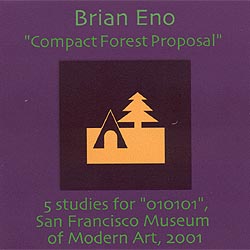
"Compact Forest Proposal" is the twentieth solo studio album from Brian Eno, released in February 2001.

"Lightness" is the sixteenth solo studio album by Brian Eno, released in 1997, and re-released in 2000 by Opal Music. The music on the album was made for an Installation—a show featuring music and visuals—that took place at the Marble Palace in Saint Petersburg, which accommodates permanent exhibitions of the State Russian Museum, from November to mid-December 1997.
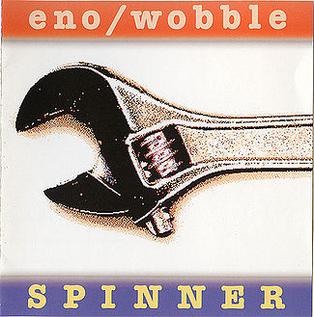
Spinner is an instrumental album by British musicians Brian Eno and Jah Wobble, released in 1995.
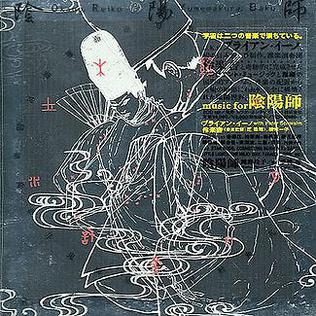
Music for Onmyo-Ji is a two disc image album for Reiko Okano's manga adaptation of Baku Yumemakura's novel series of the same name. The first disc features performances by gagaku ensemble Reigakusya (伶楽舎), the second features performances by Brian Eno and J. Peter Schwalm.
Yoshio Machida is a Japanese experimental musician, a steelpanist, composer, and visual artist.
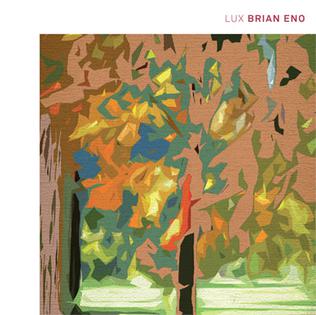
Lux is the twenty-fifth solo studio album from Brian Eno, released through Warp on 13 November 2012. The album is a collection of ambient soundscapes that have been installed in art galleries and airport terminals. Critical reception has positively compared it with Eno's previous ambient work and noted that it is both relaxing as well as challenging music for those who engage it critically. In 2013, Brian Eno created a number of limited edition prints featuring the cover artwork from Lux made available only from his website.
Peter Chilvers is a Cambridgeshire-based British musician and software designer.

Brian Peter George St John le Baptiste de la Salle Eno, also known by the mononym Eno, is an English musician, composer, record producer and visual artist. He is best known for his pioneering contributions to the ambient music and electronic genres and for his work in rock, artistic pop and minimalist drone music. A self-described "non-musician", Eno has helped introduce unconventional concepts and approaches to contemporary music. He has been described as one of popular music's most influential and innovative figures. In 2019, he was inducted into the Rock and Roll Hall of Fame as a member of Roxy Music.
Max Eastley is a British visual and sound artist. He is part of the Cape Farewell Climate Change project. He studied painting and graphic art at Newton Abbot Art School and then went on to gain a BA in Fine Art (1969–1972) at Middlesex University. He is a sculptor (kinetic), musician and composer. His primary instrument is a unique electro-acoustic monochord, developed from an aeolian sculpture. 'The Arc' consists of a single string stretched lengthwise across a long piece of wood which can be played with a bow, fingers or short glass rods. The end of the instrument has a microphone attached so the basic sound can be amplified, recorded and run through sound effect programs.

J. Peter Schwalm is a German composer and music producer, active in the fields of electronic music, ambient, radio drama, film, theatre and ballet. He is best known for his work with musician Brian Eno. He lives and works in Frankfurt.

Reflection is the twenty-seventh solo studio album by Brian Eno, released on New Year's Day 2017 on Warp Records. It is a piece of generative ambient music produced by Eno, which plays indefinitely via an app, modulating its output at different times of the day. A pre-recorded version of the album is available on CD and vinyl, which runs for 54 minutes. Digital streaming versions of the album update on a seasonal basis. It was nominated for the 2017 Grammy Award for Best New Age Album and was released to a positive acclaim by critics.

















